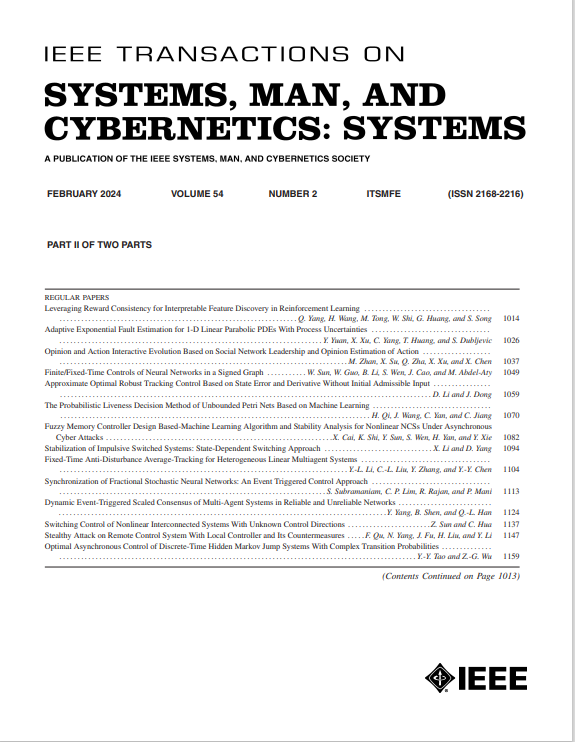Extended Stability Envelopes and Effectiveness Quantification for Integrated Chassis Control With Multiple Actuator Configurations in the Energy Phase Plane
IF 8.7
1区 计算机科学
Q1 AUTOMATION & CONTROL SYSTEMS
IEEE Transactions on Systems Man Cybernetics-Systems
Pub Date : 2025-08-20
DOI:10.1109/TSMC.2025.3594736
引用次数: 0
Abstract
The emerged integrated chassis is playing an increasingly pivotal role in enhancing vehicle stability, which typically needs estimation of the stability envelope and proper coordination strategy for chassis controller design. The conventional stability envelope determined in phase plane ensure vehicle self-stability, while it neglects the influence of chassis actuators. To play out full performance of integrated chassis, this study proposes a novel extended stability envelope analysis method to quantify the effect of different chassis actuator combinations on vehicle lateral dynamic. In energy phase plane, the state change direction with influence of control inputs are employed to judge whether a given state will go beyond the tire’s grip limit. Accordingly extended stability envelopes of some typical actuator combinations, i.e., active front steering (AFS) and active rear steering (ARS), AFS and torque vectoring control (TVC), ARS and TVC, are determined. Meanwhile, principle to quantify the overlapping effectiveness range and unique effectiveness range between ARS and TVC is introduced, accordingly effectiveness factors used for coordination control are discussed. In summary, the proposed method in this article has considerable potential for coordination control of integrated chassis, by providing comprehensive analysis method to estimate the extended stability boundary and quantify the effectiveness range with influence of actuators taken into account.能量相位平面多作动器组合底盘控制的扩展稳定包络和有效性量化
集成底盘的出现在提高车辆稳定性方面发挥着越来越重要的作用,底盘控制器的设计通常需要稳定包络线的估计和适当的协调策略。传统的稳定包络线在相位平面上确定,保证了车辆的自稳定性,忽略了底盘作动器的影响。为了充分发挥集成底盘的性能,本研究提出了一种新的扩展稳定性包络分析方法,以量化不同底盘作动器组合对车辆横向动力学的影响。在能量相位平面上,利用控制输入影响下的状态变化方向来判断某一给定状态是否会超出轮胎的抓地力极限。据此,确定了主动前转向(AFS)和主动后转向(ARS)、主动前转向(AFS)和扭矩矢量控制(TVC)、ARS和TVC等典型执行器组合的扩展稳定包络。同时,介绍了ARS和TVC之间重叠有效范围和唯一有效范围的量化原则,并讨论了协调控制中使用的有效因子。综上所述,本文提出的方法提供了综合的分析方法来估计扩展稳定边界并量化考虑作动器影响的有效范围,在集成底盘协调控制方面具有相当大的潜力。
本文章由计算机程序翻译,如有差异,请以英文原文为准。
求助全文
约1分钟内获得全文
求助全文
来源期刊

IEEE Transactions on Systems Man Cybernetics-Systems
AUTOMATION & CONTROL SYSTEMS-COMPUTER SCIENCE, CYBERNETICS
CiteScore
18.50
自引率
11.50%
发文量
812
审稿时长
6 months
期刊介绍:
The IEEE Transactions on Systems, Man, and Cybernetics: Systems encompasses the fields of systems engineering, covering issue formulation, analysis, and modeling throughout the systems engineering lifecycle phases. It addresses decision-making, issue interpretation, systems management, processes, and various methods such as optimization, modeling, and simulation in the development and deployment of large systems.
 求助内容:
求助内容: 应助结果提醒方式:
应助结果提醒方式:


